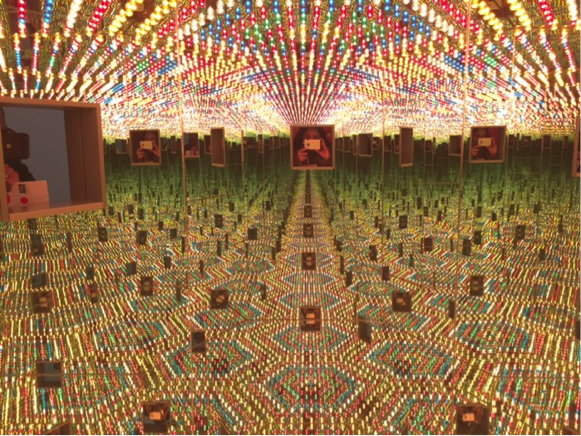Recently, while attending an annual silent meditation retreat at the edge of the beautiful Bruce
Trail, I was reminded of the incredible value of Saṃgha*. This diverse circle of yoga
practitioners came together to commune in silence among wild thyme, giant cedars, ponds,
meadows and sky. Our time together was spent in meditation, walking contemplation and
gentle movements of yoga. Bumbling bees and jade dragonflies were our guides through wood
and fern, as we followed a compass pointing to our hearts. For a few days, in a humble
monastery, we are privileged to collectively embrace quiet – we gaze at it, open our arms wide
and step into it, and gather it around us like a soft cobweb of stars. Without words and daily
routines, we find ourselves and each other anew. Gentle nods, smiles, hugs, and mindful
gestures light our way as we are intertwined in our intention to work towards compassion and
non-violence. My daily practice fully enriched by the efforts of this silent fellowship.
This sense of collectivism reminded me of working with my peers as a child in elementary
school and later high school in Tanzania, where we cultivated small communal vegetable farms
as part of our school curriculum. Nature was always a balm as we stopped for shade under
jacaranda trees and umbrella-shaped flame trees. At that time, President Julius Nyerere
stressed the value of agriculture and ujamaa or kinship. He saw education as liberation and felt
that children and educators should be engaged in productive, self-reliant activities. When my
family later moved to Kenya, President Jomo Kenyatta had popularized the philosophy of
harambee, which is a tradition to build on community self-help events to utilize local resources.
As a teenager, I participated in many cooperative harambee efforts that raised funds for a
friend to pay for school fees or pay for textbooks, or organize a wedding for a neighbour, or
help an elder buy a small rural property. The fundamental idea was always collective good
rather than individual benefit. When we watched Nelson Mandela roar “Ubuntu”, we all stood with him because we fundamentally understood the concept that “I am because we are.” We
knew it was our duty to support each other and that we could make everything happen
together.
“In Africa there is a concept known as “ubuntu” – the profound sense that we are human only
through the humanity of others; that if we are to accomplish anything in this world it will in
equal measure be due to the work and achievement of others.”
-Nelson Mandela
More than a decade ago, this insight of inter-connectedness guided us in setting up the first
support group for people living with HIV in our suburban neighbourhood in York Region.
Working in an AIDS-service organization was extremely isolating as a handful of us pushed back against stigma and NIMBYism at that time. It was not enough to sign petitions, write grant
proposals and meet politicians for support. We needed a place to practice our resilience –
where we could live our lives, cultivate kindness, dare to be vulnerable, share joy and raise
children. We needed community to heal and where the hearts were vast enough to hold all of
us.
Zevie visits Santropol Roulant in Montreal
Wandering through the urban rooftop garden at Santropol Roulant in Montreal in August, I felt
a sense of quiet pride to see Ubuntu in practice all over again. This award-winning community
food hub includes an organic agriculture program that grows food on several farm sites and
uses the produce to feed people who are unable to access healthy meals. Organic baskets are
also available for pick-up at the weekly farmers’ markets organized by the Roulant. Responding
to the immense need for food security, 1500 volunteers give their time to build an
intergenerational community in Montreal. The Meals-on-Wheels program invites youth
volunteers to prepare and deliver food, by foot or on bicycles or by car, five days a week to
community members living with a loss of autonomy. The kitchen is a happy space at the
Roulant as volunteers customize meals based on food restrictions, while delivery time allows
for warm conversations that break down barriers and build social inclusion. I was completely
moved by the dynamic energy, openness, and community engagement that I noted as I chatted
with staff. From the courtyard to the kitchen and through the streets of the Le Plateau
neighbourhoods, the vibrant chorus of collectivism was as radiant as the sunflowers on their
rooftop.
I am completely humbled by brilliant examples of grassroots community movements
everywhere I go. Do you have any stories of harambee to share from your meanderings in
community? Drop me a line, I would love to hear it!
* Saṃgha is a Sanskrit word meaning assembly or congregation or collective gathering. Sangha, a variation of the same word, is a Pali word often used by monastic communities of Buddhist monks who follow rigorous tradition.



